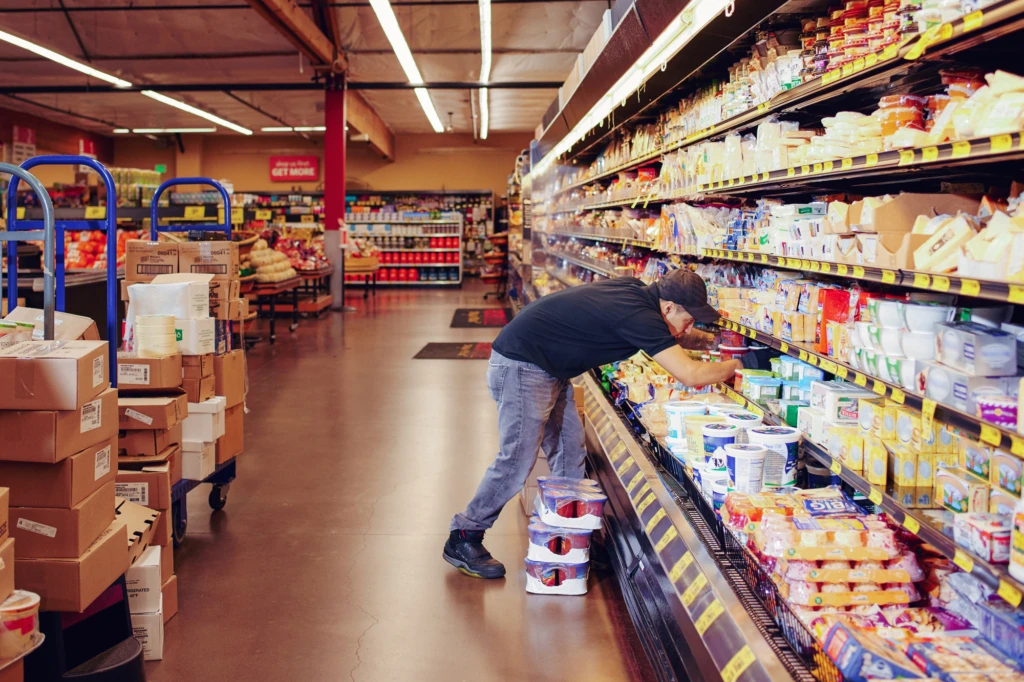
3 ways retailers are using AI to innovate in-store operations
Retailers looking to increase customer satisfaction while decreasing costs are turning to artificial intelligence (AI) to transform operations. Retailers use AI in the cloud to process large volumes of data to deliver online product recommendations or to optimize demand forecasting. With the advent of AI-optimized hardware and container-packaged analytics applications, retailers are now applying AI at the edge. Edge devices run AI algorithms to analyze and act on data locally. In addition to reducing bandwidth, AI at the edge facilitates real-time decision making. According to Gartner research, 77 percent of retailers plan to deploy AI by the end of this year.1 I talked to partners Neal Analytics, Consumption Information Real Time (CIRT), and Ombori to learn how they are using Azure IoT services with AI to innovate in-store operations.
Learn how Microsoft enables intelligent retail.

Ensuring products are available on shelves
When a customer invests time and energy to make a trip to a physical store, the retailer needs to ensure products are available on shelves. A national pharmacy leader looked to AI at the edge to address its shelf stockouts.
The pharmacy leader selected a solution from Neal Analytics called StockView. The solution relies on high-definition video streams from IP cameras pointing at pharmacy shelves. These video streams are fed to Azure Stack Edge devices in the store running a customized vision AI model. The AI models process the high-definition video in near-real-time to detect empty sections of shelves. When a stockout is detected, employees are notified. Stock View also analyzes stockout trends to help improve inventory planning across stores.
Greg Gomez, VP of Business Development, Neal Analytics stated, “By implementing computer vision AI on the Azure Stack Edge, we’re able to provide the customer with a cost-effective stockout detection solution that scales to thousands of stores without the need for costly upgrades to store shelves or hardware infrastructure.”

Reducing in-store equipment costs
Machine learning, a subset of AI, can be used to build predictive maintenance programs for retail equipment. Predictive maintenance increases efficiency while reducing expenses.
The South African Breweries (SAB (Pty) Limited), a subsidiary of AB InBev, applied an innovative IoT solution from Microsoft Strategic Partner, Consumption Information Real Time (CIRT) to monitor the location and health of its fleet of over 100,000 coolers deployed in restaurants, bars, and taverns throughout South Africa in 2020. Connecting each cooler to the Azure cloud could improve tracking and enabled SAB to reduce the number of coolers lost each year—typically up to 10 percent of total inventory.
In addition to a location sensor, the CIRT Fridgeloc© Connected Cooler solution built with Azure IoT Central included temperature sensors—on both the inside of the cooler and on the cooler motor. The temperature data gave SAB valuable insights to improve business outcomes. CIRT and SAB can correlate temperature data on the inside of the cooler and on the motor in terms of thermal dynamic data analyzed in Azure. Machine learning algorithms could be applied to predict when AB InBev should send a technician to repair a cooler.
Using these algorithms to drive maintenance can help SAB avoid periods of downtime while supporting efforts to minimize energy consumption when technicians traveled. This proactive approach decreases downtime, increases sales since no one wanted to drink warm beer, and eliminated the emergency call-out and high associated costs.
Ajay Lalu co-founder of CIRT said, “The ability to know when a cooler is behaving abnormally can save millions annually in single call out fees, creates a better customer experience as the bar owner does not even have to log a call thereby reducing frustrations, and increasing sales as the cooler is always operating optimally. This has an impact on C02 emissions the motor is working optimally using less electricity and fewer miles for call-outs. When a technician is in the area s/he can service other coolers proactively.”
Creating unique in-store experiences
Retailers are applying AI in-store to create unique experiences. These experiences turn the physical store into a destination and give customers a reason to come back after the COVID-19 pandemic. In her HBR article, “What will the future of retail look like?” Kate Machtiger comments, “The biggest room for innovation lies in experiential escapes.”2 Technology now provides the ability for in-store devices to see, hear, speak, search, understand, and accelerate decision-making enabling a wealth of experiential use cases.
Since 2018, H&M has successfully applied AI to create a memorable and compelling experience in its flagship store in New York City with an interactive mirror. The H&M Voice Interactive Mirror was built through a collaboration with the Ombori Group and ITAB leveraging Azure Cognitive Services. Visitors to the store control the mirror with their voices. The mirror speaks to visitors and provides a “fashion inspirations” showcase. The mirror also offers “selfie” feature. Visitors create a picture in the style of a magazine cover which they downloaded to their mobile device to share on social media via a QR code.
The interactive experience has been a win for H&M. Most visitors interacting with the mirror share their experiences on social media. This connects them with H&M for further engagement.
Andreas Hassellof, CEO, Ombori Group commented, “Experiential retail leveraging AI is key to bringing customers back to the store. Adding a fun surprise to the store visit as H&M has done makes it memorable.”
Summary
We’ve seen three examples of how retailers are using AI at the edge to innovate in-store operations: minimizing stockouts with vision detection, reducing equipment costs through predictive maintenance, and creating unique experiences to engage customers in physical stores. Technologies like Azure Stack Edge, Azure Cognitive Services, and Azure IoT Central are enabling retailers to increase customer engagement and satisfaction while decreasing costs.
Learn more about how Microsoft enables intelligent retail.
Download the Microsoft 2021 Retail Playbook.
Download the IoT Signals Report and read the retail research.
Check out the IoT retail demos on GitHub.
References:




